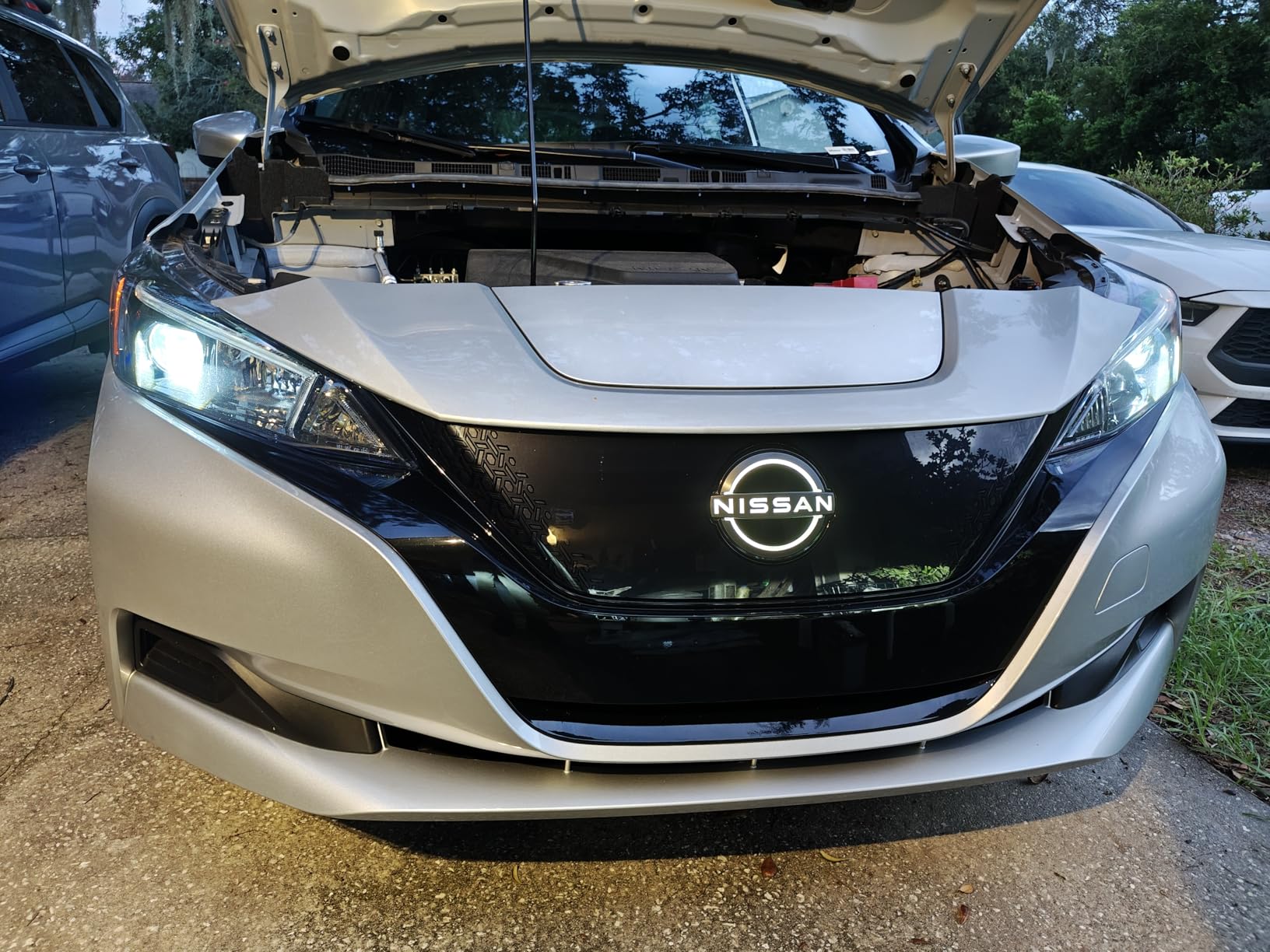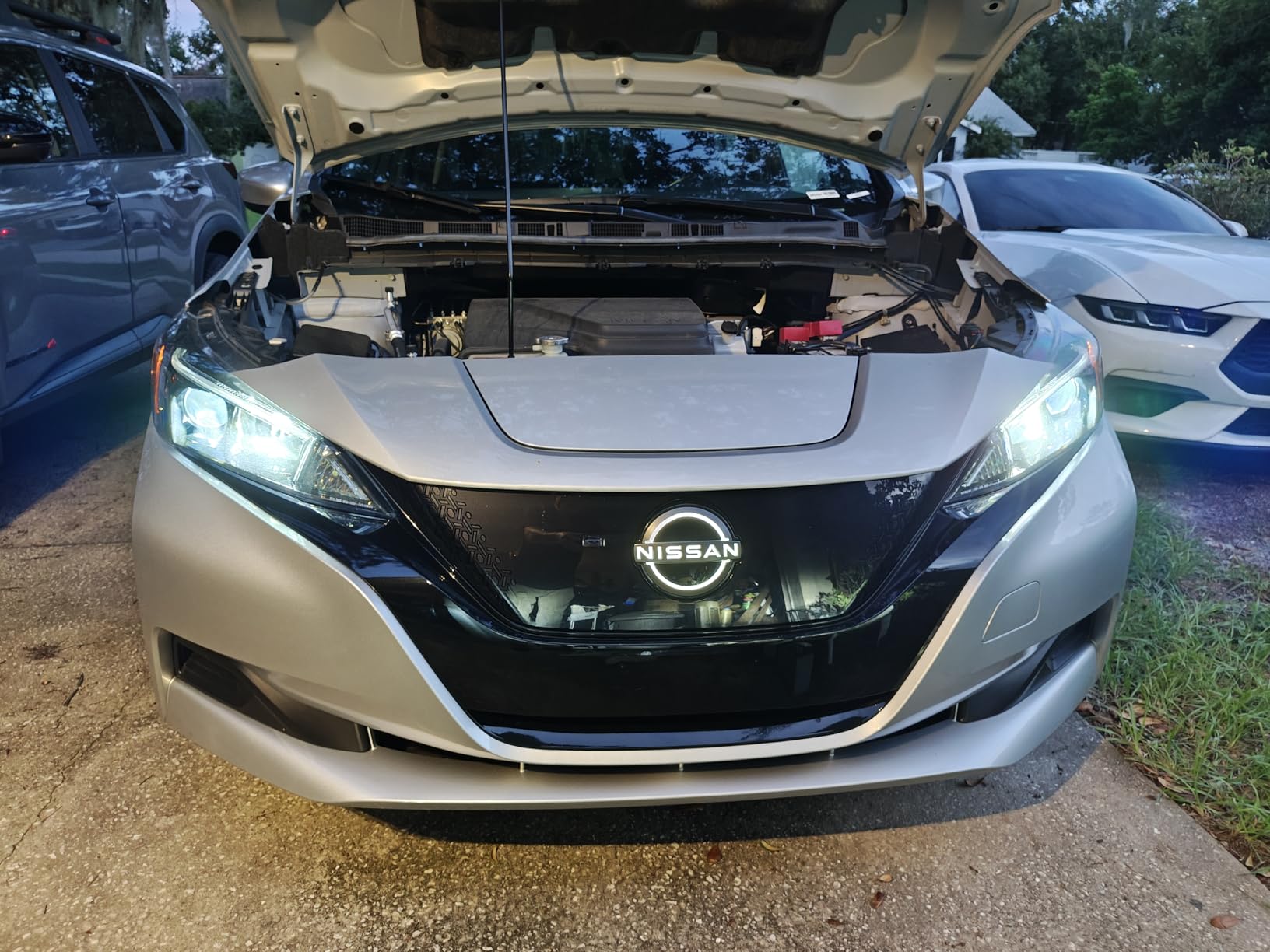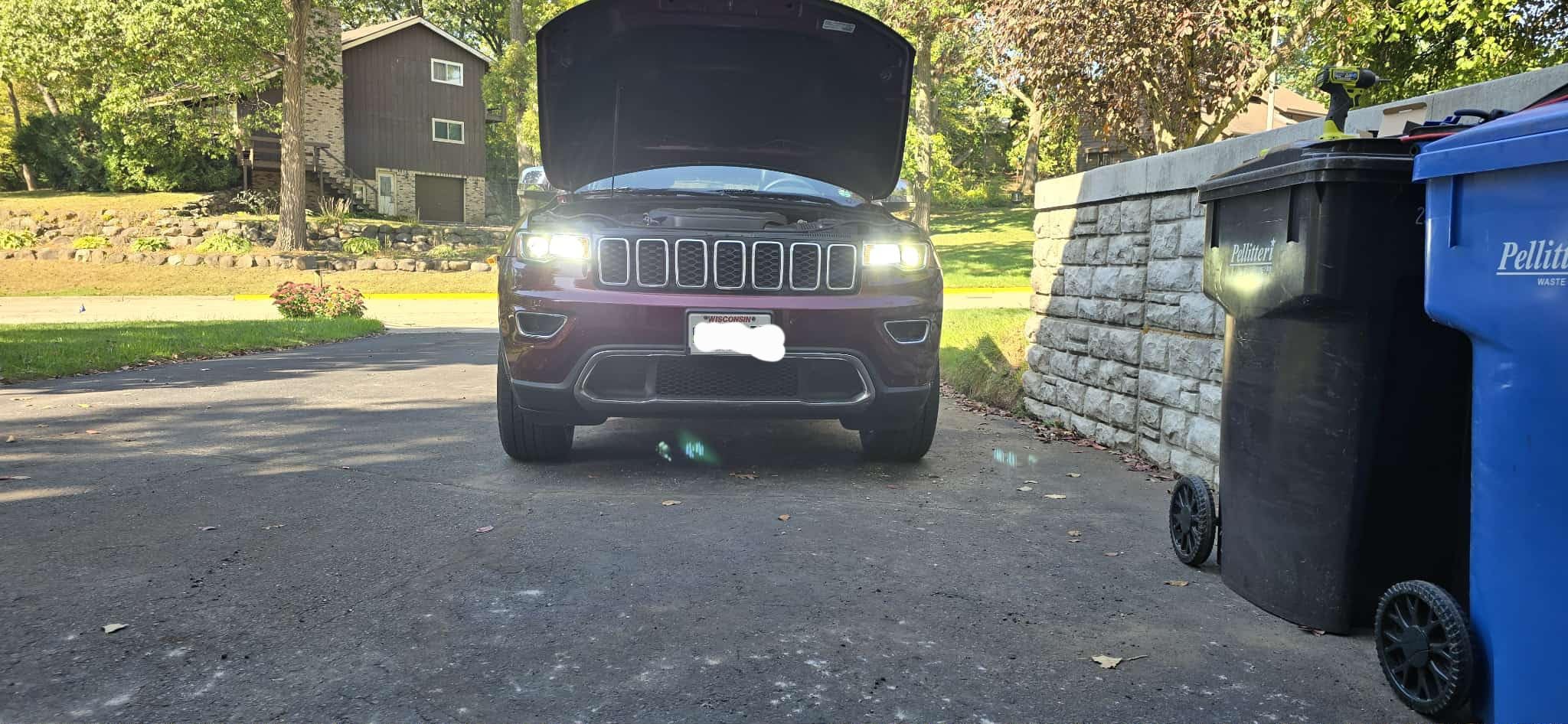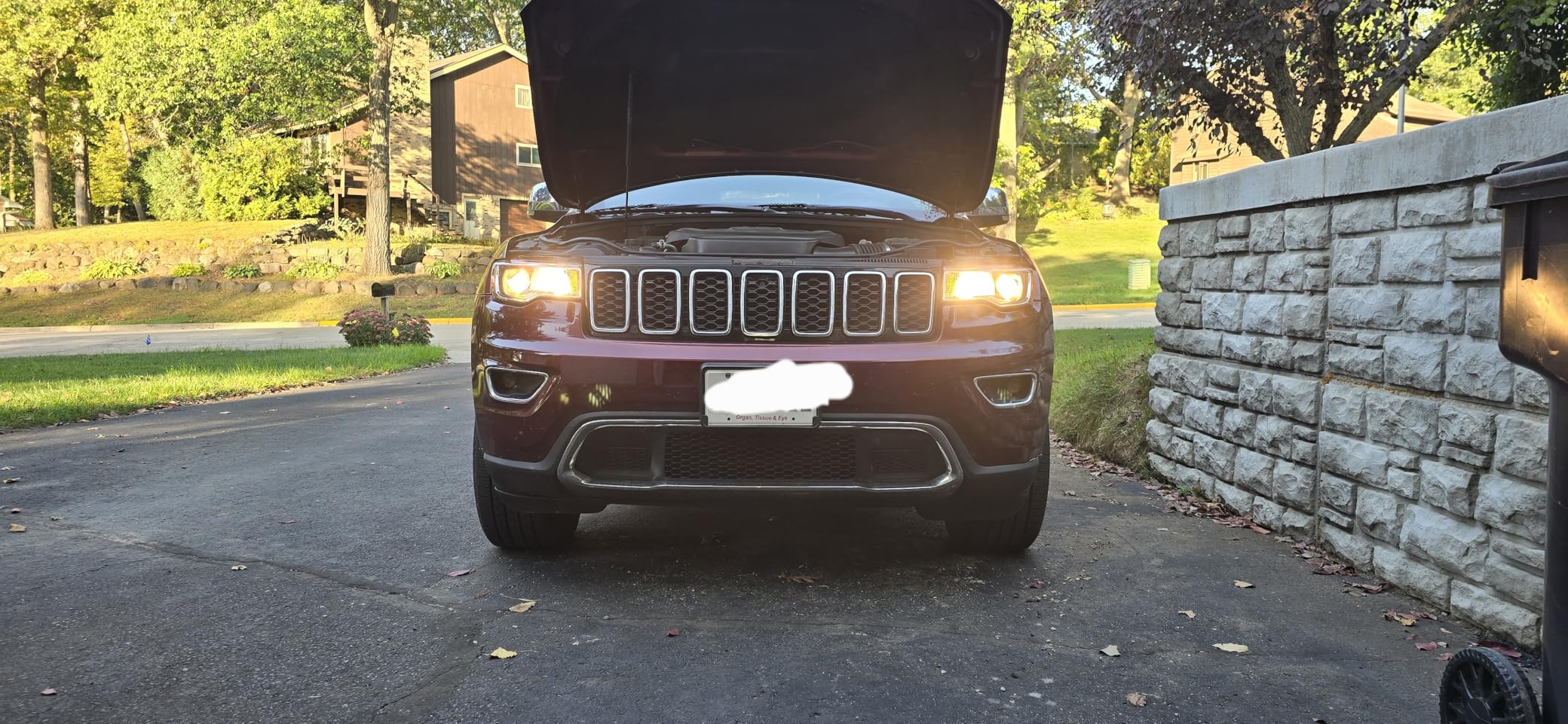Quick Read
Halogen headlights typically last 500-2,000 hours (about 9 months to 2.5 years of normal driving), while HIDs last 3-7 years and LEDs can last 10-20+ years. Quality brands, proper installation, and a healthy electrical system will maximize your headlight lifespan, preventing those frustrating roadside burnouts.
Introduction
If you've been frustrated by replacing the same headlight bulb twice in one year, you might be using the wrong type for your driving habits. Ever been stuck on a dark road with a burned-out headlight? It's frustrating and potentially dangerous. Choosing between halogen, LED, and HID headlights affects not just how long before you'll face this problem again, but also your visibility and wallet. Halogens might need replacing after just 500 hours, while quality LEDs can shine for tens of thousands of hours, saving you multiple trips to the auto parts store and giving you peace of mind on those dark roads.
Halogen Bulbs: Lifespan & Performance Facts
How Long Do Halogen Bulbs Last?
Halogen bulbs are the most common headlight type found in vehicles today, using a tungsten filament surrounded by halogen gas to produce light.
- OEM vs. Aftermarket: OEM (Original Equipment Manufacturer) bulbs typically last up to 5,000 hours, while aftermarket options might only last 500 to 1,000 hours
- Average Lifespan: Most standard halogen headlights last between 500 to 2,000 hours of operation
For the average driver using headlights about 2 hours daily, expect replacements every 9 months to 2.5 years.
What Affects Your Halogen Bulb's Lifespan?
A few things can cause your halogen headlights to burn out quickly:
1. Electrical Problems: Bad wiring or a failing alternator can destroy bulbs instantly. When the electrical system of your vehicle sends too much voltage to the headlights, it overloads the filament. The signs include dashboard lights or multiple bulbs blowing at the same time.
2. Driving Habits: Short trips are more stressful on bulbs than long drives. Each time you start your car, the cold filament is put through thermal shock when electricity quickly heats it up—short, frequent trips being very bad for headlight life.
3. Weather Conditions: Extreme cold or heat can damage the filament inside. High temperatures will dry out the filament faster, and freezing temperatures will make the filament brittle and break as a result of road vibrations.
How Can You Tell When Halogen Bulbs Are Failing?
You'll notice several warning signs when your halogen bulbs are nearing the end:
1. Gradual dimming (up to 30% brightness loss before complete failure)
2. Flickering, especially when driving over bumps
3. Intermittent cutting out, particularly during cold starts
4. Yellowing of the light output

What Are the Pros and Cons of Halogen Bulbs?
Advantages:
- Inexpensive ($10-25 per pair)
- Easy to replace without special tools
- Widely available at auto parts stores
- Compatible with most vehicles
Disadvantages:
- Shortest lifespan of all headlight technologies
- Less energy-efficient (much energy converts to heat)
- Not as bright as HID or LED options
- Yellow light output compared to whiter alternatives
HID (Xenon) Bulbs: Lifespan & Performance Guide
How Long Do HID Bulbs Last?
HID bulbs offer significantly longer lifespans than their halogen counterparts:
- OEM vs. Aftermarket: Factory-installed OEM HID bulbs can last up to 20,000 hours, while quality aftermarket options typically last between 5,000 to 10,000 hours
- Average Lifespan: Most HID bulbs last between 2,000 to 15,000 hours of operation
For the average driver, this translates to approximately 3-7 years before replacement becomes necessary.

Why Do HID Bulbs Fade Over Time?
Unlike halogen bulbs that typically work until they suddenly burn out, HID bulbs gradually lose brightness throughout their lifespan due to:
- Gradual depletion of the metallic salts inside the bulb
- Progressive darkening of the inner quartz tube from electrode material deposits
- Natural aging of the gas mixture inside the bulb
What Factors Affect HID Bulb Longevity?
Several key factors influence how long your HID bulbs will last:
1. Ballast Health: The ballast is the "brain" of your HID system—a good one delivers stable power to your bulbs. When ballasts start to fail, you'll notice flickering headlights or delayed start-up, both signs you may need replacements soon.
2. Temperature Extremes: HIDs struggle in very hot or cold weather. Excessive heat can damage the electronic components, while extreme cold makes start-up harder and puts extra strain on the system each time you turn on your lights.
3. Driving Habits: Short trips kill HIDs faster because each cold start requires a 23,000-volt surge to ignite the xenon gas. If you mainly drive short distances, you're constantly putting your system through its most stressful cycle.
4. Proper Installation: Touching the glass bulb with bare fingers leaves oils that create hot spots and lead to premature failure. Always use gloves during installation and avoid bumping the fragile internal components.
How Can You Tell When HID Bulbs Are Failing?
Watch for these common signs that your HID bulbs need replacement:
- Noticeable dimming compared to when they were new
- Color shift (typically changing from white to bluish or purplish hues)
- Slow startup or delayed ignition (taking more than 5-10 seconds to reach full brightness)
- Flickering during operation
- "Cycling" behavior (turning on and off repeatedly)
What Are the Pros and Cons of HID Bulbs?
Advantages:
- 2-3 times brighter than standard halogen bulbs
- Significantly longer lifespan than halogen options
- Better visibility in poor weather conditions
- More energy-efficient than halogen bulbs
Disadvantages:
- More expensive upfront cost ($100-300 per pair plus installation)
- Require ballasts and sometimes professional installation
- Can cause excessive glare for oncoming drivers if not properly aligned
- Contain small amounts of mercury (environmental concern)
- Slower to reach full brightness than halogen or LED options
LED Headlights: Superior Lifespan & Performance
How Long Do LED Bulbs Last?
LED headlights offer the longest lifespan of all headlight technologies:
- OEM vs. Aftermarket: Factory-installed LED headlights can last up to 45,000 hours, while quality aftermarket options typically range from 5,000 to 20,000 hours
- Average Lifespan: Most premium LED headlights last between 25,000 to 50,000 hours
For the average driver, this translates to 10-20+ years—potentially outlasting the vehicle itself.
What Is the L70 Rating and Why Does It Matter?
Unlike regular bulbs that perform until they cease working, LEDs naturally fade to the end. The L70 rating is a point at which an LED drops to 70% of the initial brightness—where most begin to notice brightness reduction. Proper-quality LED headlights stay above 70% brightness until their expected lifespan, producing uniform visibility during years of travel.
What Factors Affect LED Bulb Longevity?
Some of the primary factors that influence how long your LED headlights will last at peak level:
1. Heat Management: LEDs produce less heat than other bulbs but are more susceptible to it. Quality LED headlights employ aluminum heat sinks or small fans for cooling. An LED that should last 20+ years can fail in a matter of months without adequate cooling.
2. Construction Quality: Top brands employ good-quality chips and components that last long. Budget LEDs tend to utilize inferior-quality parts that will degrade sooner and burn out faster—the $20 up-front premium may equal a few years of extra life.
3. Driver Circuit: This small electronic circuit controls the power supply to the LED. A quality driver eliminates voltage oscillations leading to flickering and premature burnout. When LEDs fail suddenly, it is often the driver circuit that fails, not the LED itself.
4. Headlight Housing Ventilation: Sealed headlight housings containing trapped LEDs that have no air can rapidly overheat. There were some factory headlights that weren't LED-compatible and were improperly ventilated, leading to cooked bulbs down the road.
5. Electrical System Health: Loose wiring in older vehicles or dead alternators could supply fluctuating electricity to LEDs and shorten their lifespan. Fix electrical quirks (like lights fading when other accessories are being used) in your vehicle before investing top dollar in fabulous LEDs.
How Can You Tell When LED Bulbs Are Failing?
Watch for these signs that your LED headlights need attention:
- Gradual dimming below acceptable brightness levels
- Noticeable color shift (often becoming more blue or yellow)
- Partial failure (some diodes in the array stop working)
- Flickering or inconsistent operation
- Complete failure (rare but possible, usually due to driver circuit issues)
What Are the Pros and Cons of LED Bulbs?
Advantages:
- Exceptionally long lifespan (potentially 25+ times longer than halogen)
- Highly energy-efficient (using up to 80% less power than halogen)
- Instant full brightness with no warm-up time
- Extremely durable with no filament to break from vibration
- Available in various color temperatures to match personal preference
Disadvantages:
- Highest upfront cost ($50-500+ for quality sets)
- Retrofit compatibility issues with some older vehicles
- Heat sensitivity requires proper heat management
- Quality varies dramatically between brands
- Premium price doesn't always guarantee premium performance
If you're still unsure about upgrading from halogen to LED headlights, compare LED vs. Halogen Headlights: Pros, Cons, and Real Differences to help you make a more informed decision.
What Really Kills Your Headlights: Common Factors Explained
No matter if you have basic halogens or fancy LEDs, these factors determine whether your headlights live a full life or die young:
1. Rough Roads Wreck Headlights
Every time you hit that pothole on Main Street, your headlights take a beating. The jarring motion can:
- Snap halogen filaments (like breaking a thin wire)
- Knock HID electrodes out of alignment (imagine loose puzzle pieces)
- Damage LED circuit connections (like repeatedly bending a wire until it breaks)
A delivery driver in rural areas might replace headlights twice as often as someone driving smooth highways.
2. Your Car's Electrical System: The Hidden Culprit
Your headlights need steady power, just like your phone. Problems arise when:
- An aging alternator sends 16 volts instead of 14 (like using the wrong charger)
- You install powerful subwoofers that cause voltage drops when the bass hits
- A corroded ground wire creates resistance (like a kinked garden hose)
A mechanic checking a Jeep with frequent headlight failures found the voltage jumped from 13.8V to 15.2V whenever the engine revved—enough to cut bulb life in half.
3. Installation Mistakes Anyone Can Make
Simple errors during replacement can doom your new headlights:
- Touching a halogen bulb with bare fingers leaves oils that create 400°F hot spots
- Installing an HID bulb tilted just 5° can cause it to overheat on one side
- Leaving connectors loose creates electrical arcing (tiny sparks that damage terminals)
A DIY enthusiast found his new LEDs lasted just two weeks because he didn't fully seat the heat sink against the housing, causing them to run 30% hotter than designed.
4. Weather That Wears Out Lights
Your local climate is either helping or hurting your headlights:
- In Phoenix, 115°F summer days bake headlight housings until seals crack
- Seattle's constant rain finds its way into poorly sealed housings, causing shorts
- Minnesota's road salt creates green corrosion on connectors, increasing resistance
A Florida driver noticed his headlights lasted half as long during hurricane season due to increased humidity getting into the housing.
Making Your Headlights Last: Smart Choices for Safer Night Driving
Regardless of whether you've chosen halogen, LED, or HID headlights, it's all about extending their life according to the factors we have listed. Don't wait until you are stuck with a dead bulb—act now by installing good quality brands for your driving conditions, maintaining your vehicle's electrical system at its peak condition, and replacing them properly. Consider upgrading to longer-lived halogens or LEDs/HIDs if you regularly drive at night or in adverse weather. Spending a few dollars on upgraded headlights now can save you money, time, and possibly worse down the road. Your visibility is directly related to your safety, so utilize your headlights as lifesaving safety tools.When deciding between halogen upgrades and LED conversions, consider how their inherent differences in energy efficiency and beam patterns align with your driving needs.




